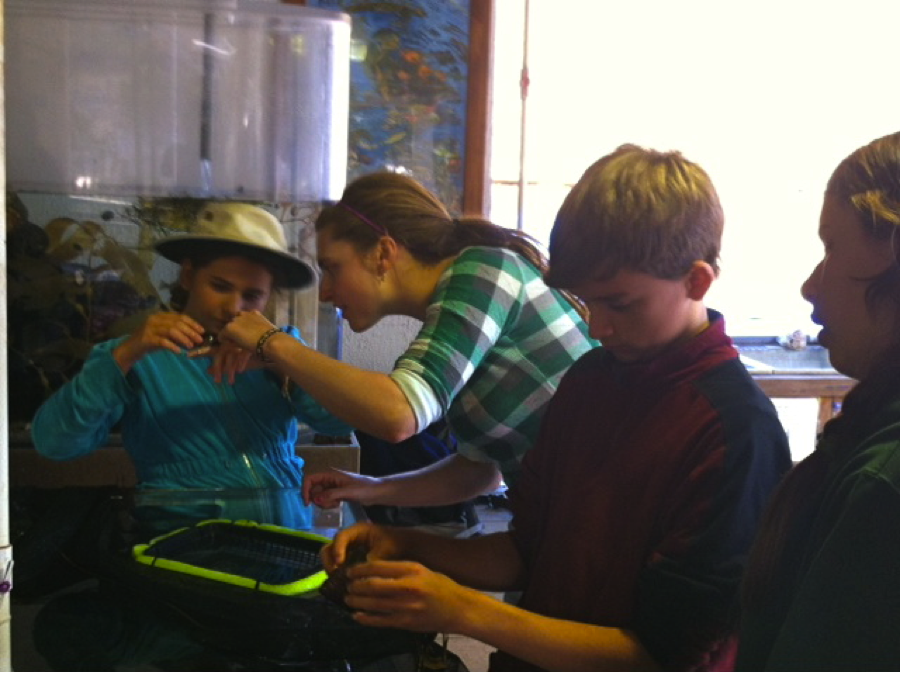By: Elise Steinberger
As an intern at the Wrigley Marine Science Center, among my other responsibilities, I help with education groups that regularly come to Catalina Island for a few days at a time. Some groups come as part of a university course, while other younger students come with their high school or home school classes. They spend time snorkeling, kayaking and hiking, and they learn about the island and the life in its waters and fields. They also usually spend time in the lab area and get oriented to local marine life at the Touch Tanks, where I help guide them through the programs.
Before the first high school group arrived for a tour this fall, I thought back to my own high school fieldtrips and mentally prepared for a mass of rowdy teenagers. However, I was caught off guard when they were incredibly focused and curious about everything going on at the Institute – even after a busy day of activities. I wondered if my high school classmates would have listened so intently as I described the research here. I talked about the science projects and the organisms in the Touch Tanks and as students raised their hands to ask questions, I was equally impressed by their inquiries. Before they departed, they even thanked me – with no prompting from their teacher – for telling them about everything. These particular students were taking a year-long marine biology class at their high school and clearly had an interest in science. It was fun to see them so engaged as WIES Educators Lynn Whitley, Lorraine Sadler, and Linda Chilton pointed out rocks and algae while kayaking. I came to the conclusion that Catalina was a fascinating opportunity for them to immerse in what they love, and that these budding young scientists must be destined to do great things.

I give a snail to one of the students to hold as they explore the Wrigley Marine Science Center’s Touch Tanks. Photo: Lynn Whitley
One of my other favorite experiences with these education groups was having a young boy from a home school group explain to me all about rocks while on a hike. I took geology in seventh grade and a few things stuck; however, this pint-sized human was a rock encyclopedia. After taking the group on a hike to the water reservoir, Lynn encouraged the students to look around and take-in their surroundings. I noticed this boy digging, picking up rocks, and inspecting them. I offered some information about the rock types on Catalina and he responded by cataloging all the rocks that filled his small palms. He listed one rock type after another and when I asked who had taught him so much, his answer was that he simply liked learning about geology. I was happy to see him so in his element as he walked around the hill.
Interacting with these groups has made me realize that, although the Wrigley Institute is an amazing place for undergraduates, Ph.D. candidates, and marine biologists, it has a profound impact on younger students as well. Some of these students seem destined to become scientists as they marvel at the research and the nature that is here. Watching their reactions, it seems as though our programs help make careers in science like marine biology become tangible, viable options – and as I’ve worked with these students, I can practically see the doors of opportunity forever flung open inside their minds.
Elise Steinberger is a fall intern at the Wrigley Marine Science Center, here to learn more about marine science before beginning her Master’s in Health and Science Writing at Northwestern University.
